GOOD HINT: Periodically check the air pressure in your tires (tab. 4.2, appendix 4). High or low pressure leads to premature tire wear, poor handling and vehicle stability.
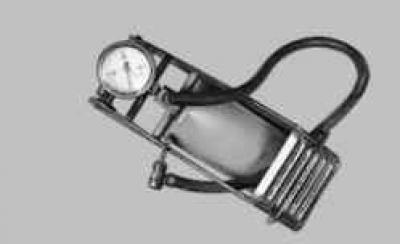
We recommend using a foot pump with a built-in pressure gauge.
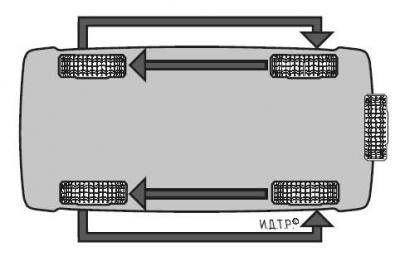
Pic. 4.1. Wheel swap diagram
In order for the tires to wear out evenly, rearrange the wheels every 10,000 km in accordance with the diagram in Fig. 4.1.
In addition, every 20,000 km, balance the wheels and check the alignment of the front wheels. To do this, contact a specialized workshop.
Table 4.2 Tire pressure*, kPa

* In cold tyres, recommended for speeds up to 160 km/h for all models except Focus ST. See Appendix 4 for more details.
** On vehicles with a diesel engine - 230 kPa.
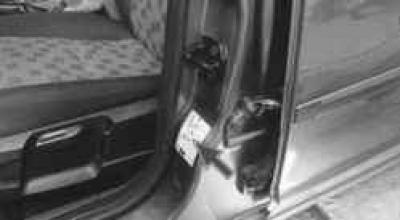
NOTE: There is a decal on the driver's door pillar..
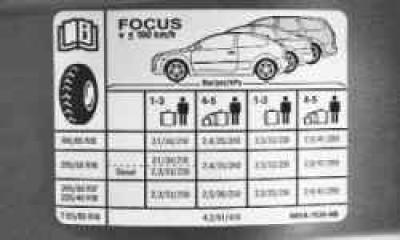
NOTE:... which indicates the air pressure in the tires at various vehicle loads.
WARNING: All work on the repair of wheels is carried out in specialized workshops.
WARNING: Check that the wheel is balanced after repair.
WARNING: Using tires with worn tread can cause an accident.
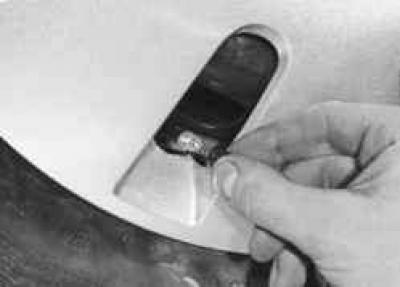
1. Unscrew the cap from the valve.
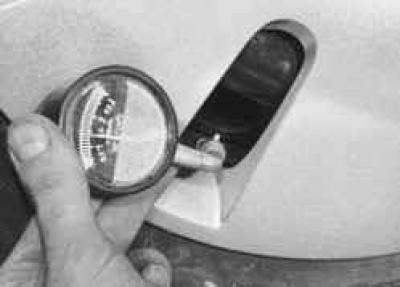
2. Check tire pressure. To do this, reset the pressure gauge to zero by pressing the special button on the pressure gauge body, connect the pressure gauge to the valve and press the spool with the tip of the pressure gauge.
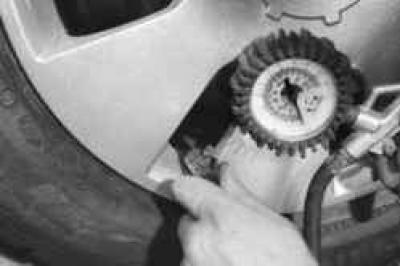
3. If the pressure is less than required, connect the hose tip to the valve and pump air, controlling the pressure on the manometer.
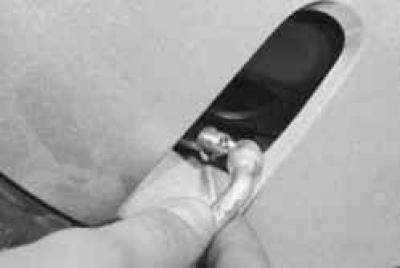
4. If the pressure is more than required, press the special protrusion of the pressure gauge on the tip of the spool and release the air from the tire. Measure the pressure with a manometer. By repeating these operations, bring the pressure to normal.
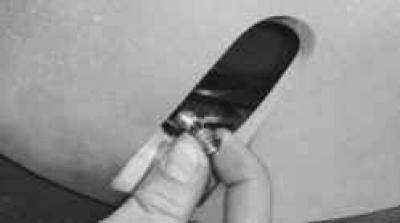
5. If you notice that the air pressure in the tires is constantly dropping, try tightening the spool with a cap with a wrench.

NOTE: This is what the protective cap looks like with the key to tighten the spool.
WARNING: To avoid contamination of the valve stems, do not operate the vehicle without the protective caps. If the caps have been lost, be sure to install new ones.
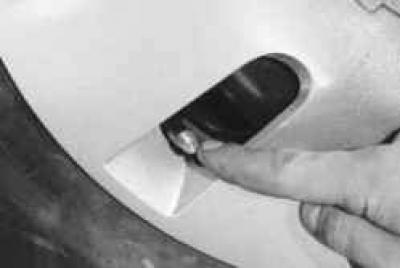
6. To check the spool for leaks, wet the valve opening. If air bubbles appear...
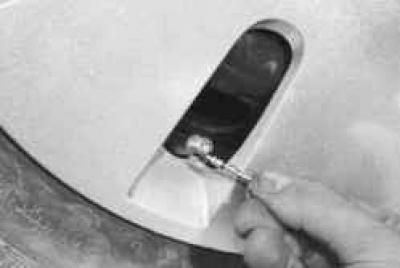
7.... replace the spool by unscrewing the defective one using a cap with a key.
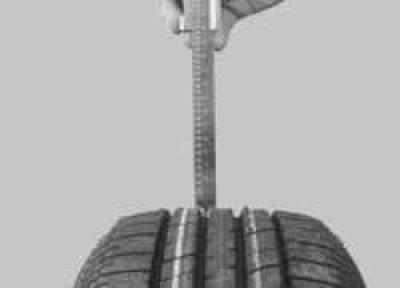
8. Measure the residual tread depth with a caliper. If the tread depth is 1.6 mm or less, replace the tire.
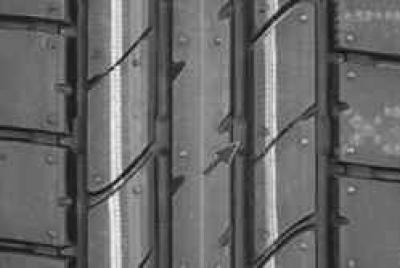
9. If there is no caliper at hand, then the tread depth can be checked visually by the tire wear indicators in the form of continuous transverse stripes on the tread.
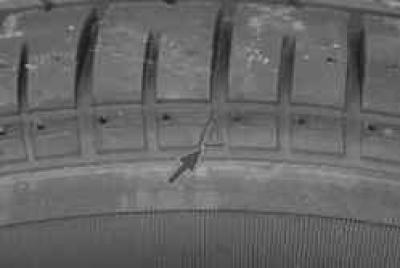
NOTE: Indicator locations are marked on the tire sidewall with a triangle or letters «TWI».
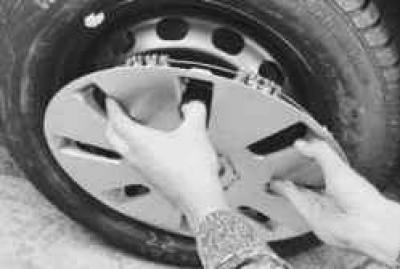
10. Remove the decorative cap..
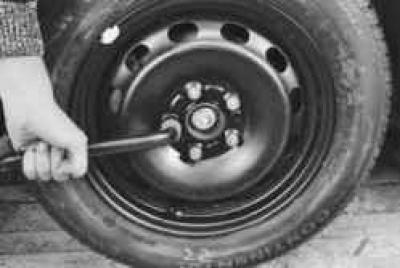
11.... and check the tightness of the wheel nuts. The moment of an inhaling of nuts of fastening of a wheel of 130 Н·м.
Visitor comments